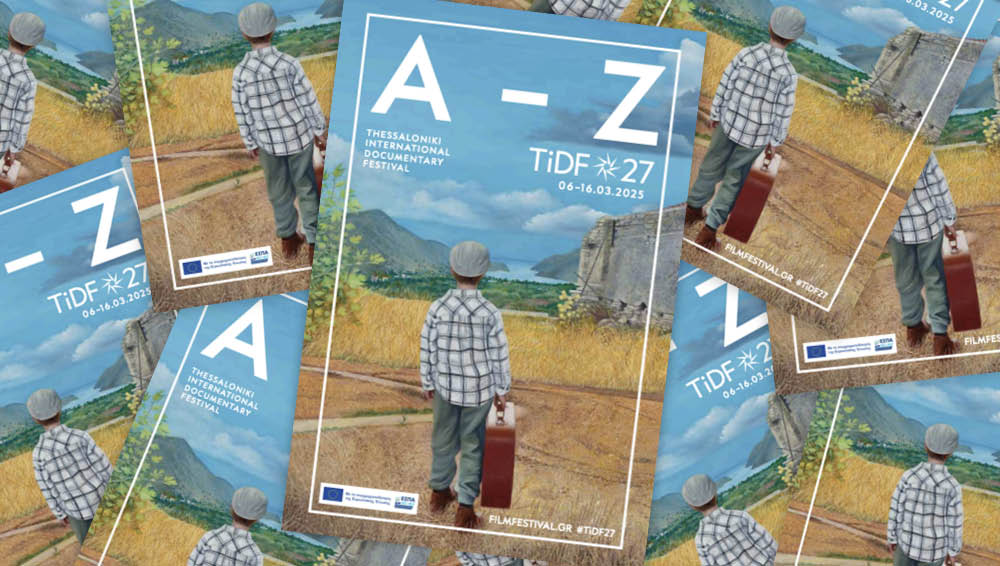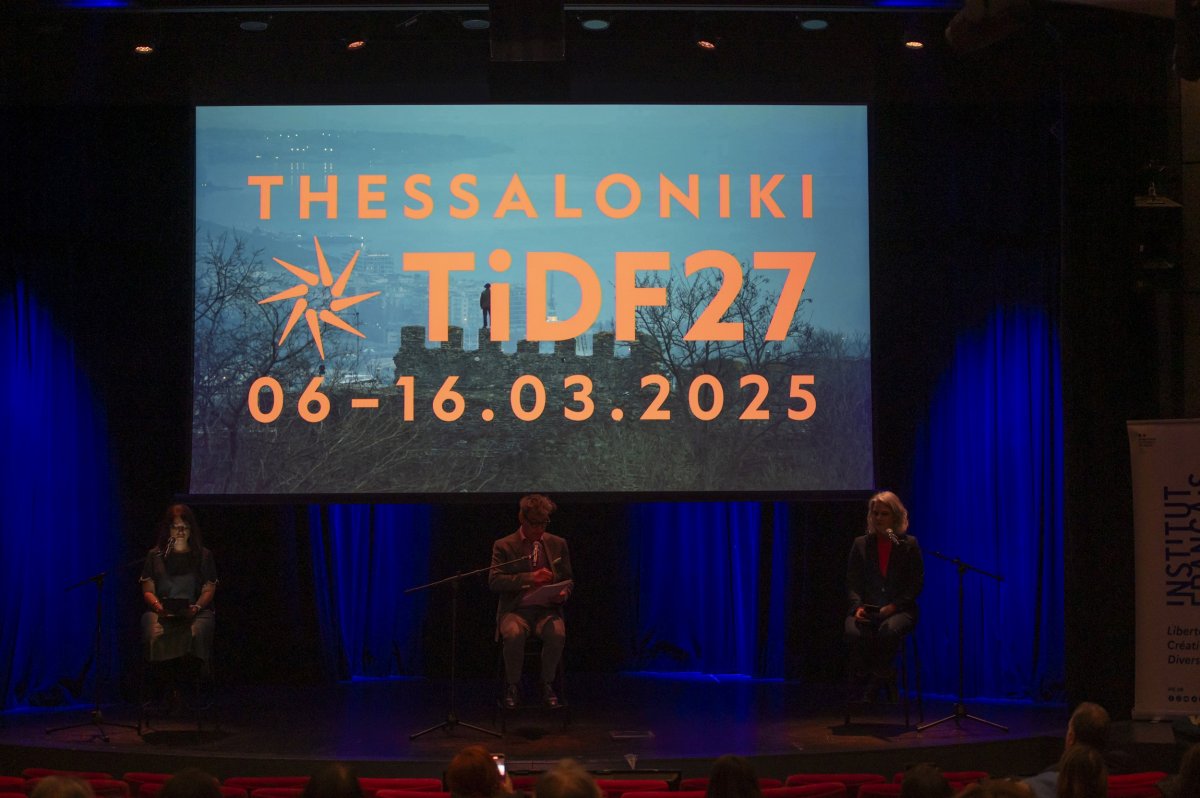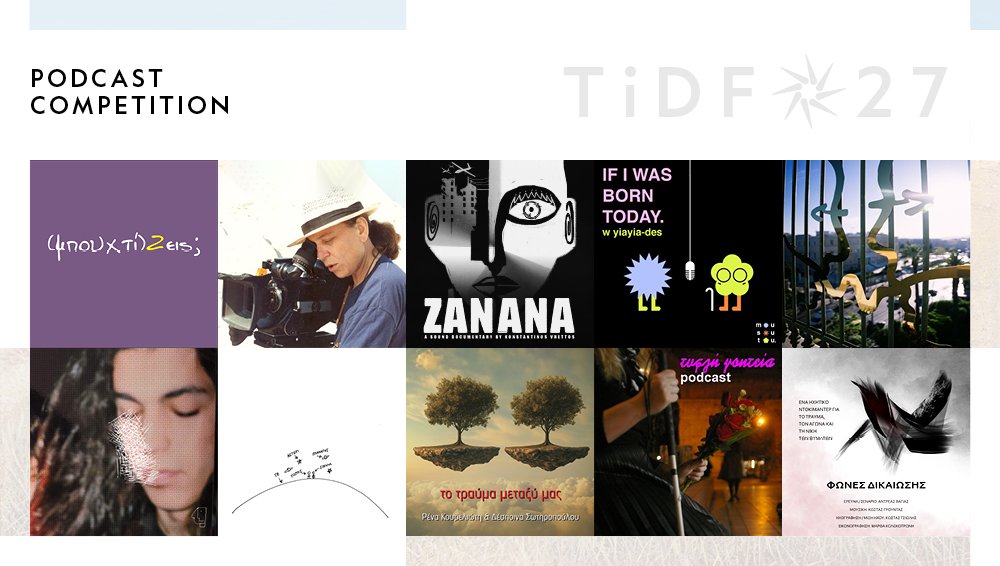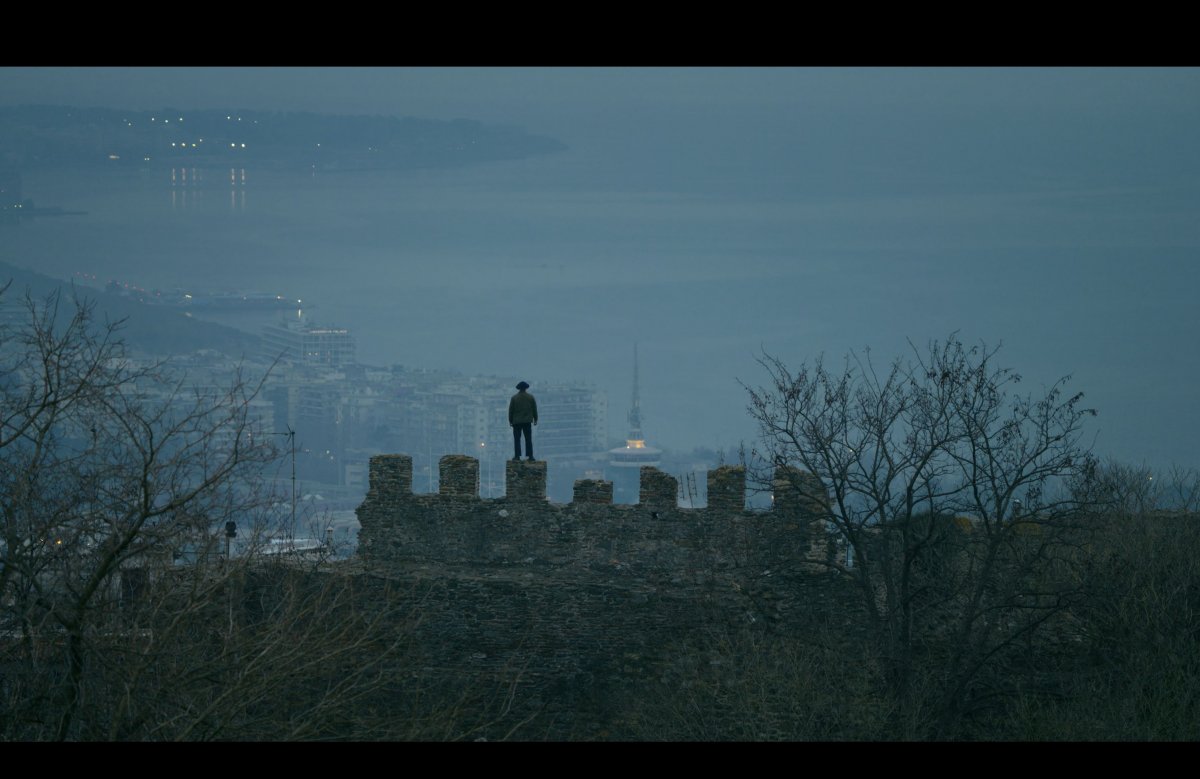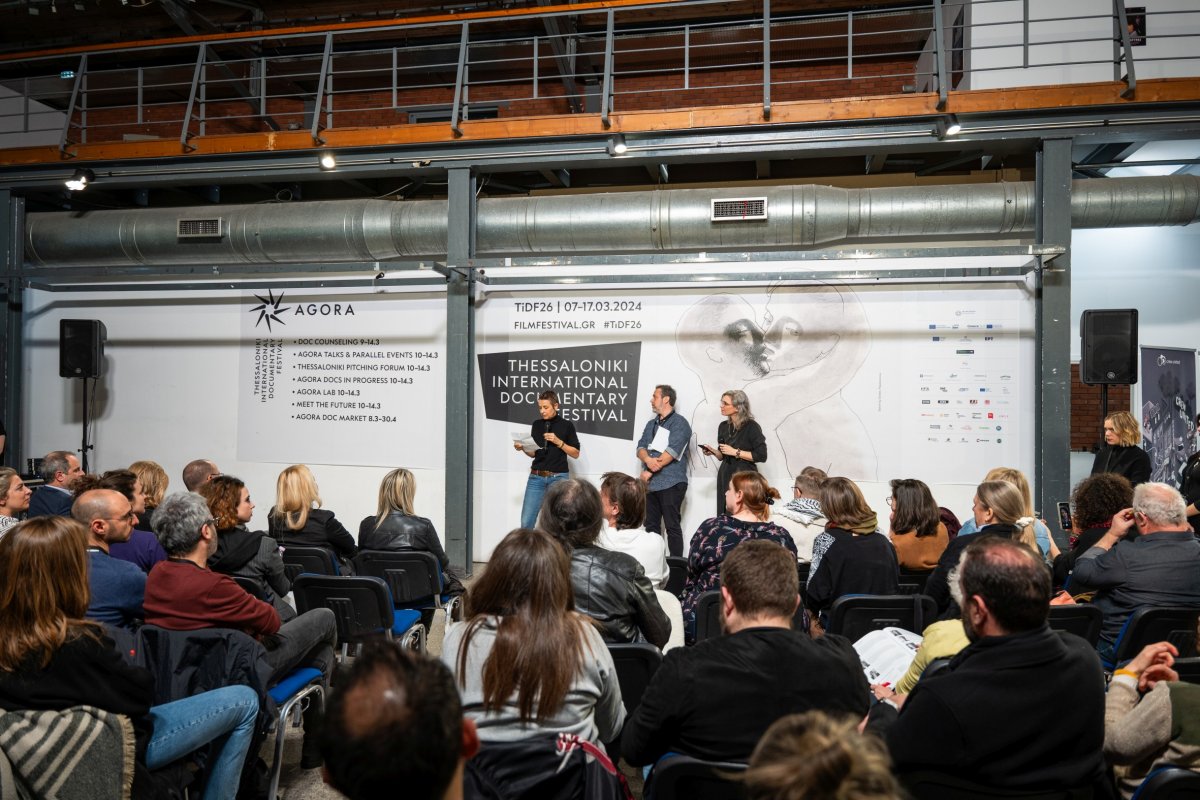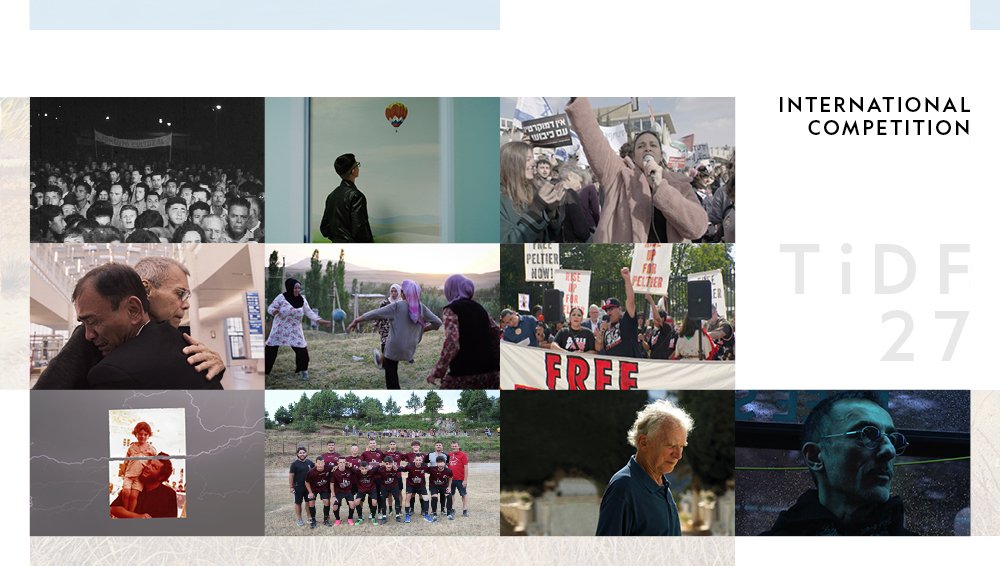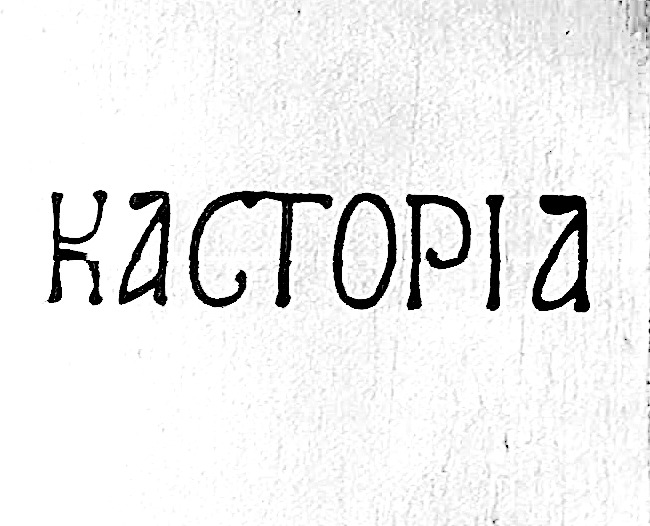19th Thessaloniki Documentary Festival
3-12 March 2017
JUST TALKING
MONDAY, MARCH 6th 2017
3-12 March 2017
JUST TALKING
MONDAY, MARCH 6th 2017
The “Just Talking” section of the 19th Thessaloniki Documentary Festival continued on Monday, March 6th 2017, at the “Room with a view” Cafe of the Olympion Complex. The discussion, moderated by TIFF’s Head of Programming Yorgos Krassakopoulos, was attended by directors Fernanda Pessoa (Stories our Cinema (did) not tell), Menios Karayannis (Deadline), Stelios Tatakis & Agnes Sklavou (Boobs), Christos Matzonas (Culinary Heritage of Mount Athos), Asli Ozarslan (Dil Leyla), Giulia Amati (Shashamane) and Maria Douza (Cine Thission of Athens).
The panel discussion began with a short presentation of the directors’ films.
Stelios Tatakis referred to the documentary Boobs, which aims to talk about this topic from a different perspective, using a title which is not politically correct when referring to women’s breasts. Agnes Sklavou added that several short stories of men and women are included in the film, all of them related to breasts and dealing with various issues from breast-feeding to social media censorship, while the main story is the one of their friend and co-scriptwriter Liopi Ambatzi, who had the initial idea for the documentary. What’s special about the film is that there is no narrator; breasts speak about themselves, as if they were the film’s characters.
The topic of Menios Karayannis’ film is death, our relation to it and why it frightens us. Documenting the views of everyday people as well as scientists, the director wanted to initiate a debate about this subject, since our relation to death defines our relation to life itself.
Christos Matzonas explained that his film focuses on the cuisine of Mount Athos, the recipes of the monastic community. Having in mind that a human being is spirit that needs the flesh and therefore food as well, the documentary depicts the food and atmosphere of the life there.
Giulia Amati’s film tells the story of a black community which abandoned the West and settled in Africa, in a region of Ethiopia called Shashamane, as the director noted.
While shooting her film Dil Leyla, Asli Ozarslan encountered some significant challenges. Initially this was a story about Leyla, who, having been born in Germany, returned to her father’s hometown, a Kurdish town on the border to Syria, where he was elected Mayor. However, when the Kurdish party was voted to be represented in the Turkish Parliament, a major political upheaval occurred, and the director was forced to stop the film’s shooting. She went back there on her own as a member of a European delegation group in order to be able to finish the documentary, which is ultimately about the political changes in Turkey.
Talking about her film, Fernanda Pessoa noted that it is based on material from the pornochanchadas, the most popular film genre in Brazil during the ‘70s, and it has a linear narrative style, from the beginning of the 1964 dictatorship to the late ‘70s.
On the other hand, Maria Douza followed a different approach in Cine Thission of Athens, as her documentary is one of many in a series of films about cinema theatres around the world, and has a certain structure which includes archive material, fiction and documentary.
Do they use a different approach when it comes to fiction and documentary films?
Maria Douza commented that she doesn’t “dare” to make a documentary; since this is a genre requires that the director is very open, has plenty of time and remains available, but also is prepared for the unpredictable, while she needs to have a structure and know the film’s ending. On the other hand, Menios Karayannis said that this is exactly what he loves about documentaries. Even though, as he said, he has worked in fiction films, he prefers the unpredictability of documentaries and the kind of material that may take you to any direction possible. Christos Matzonas also has experience in fiction films, but he realized that in documentary filmmaking you can foresee the unforeseeable, if you make a bigger effort. The negative thing about fiction though is, as he noted, that you have to reconstruct the real, while in documentaries you already have it, if it has been recorded on camera. Giulia Amati remembered the many, around 200 hours she spent for the final cut of her film and mentioned that sometimes you reach to a point when you say that this is the actual film, while in other cases you have to decide the point that the film has to reach.
How much research did they need to do in order to complete their films?
Maria Douza asked the above question to the other directors. For Giulia Amati, the biggest difficulty was that the filming took place not only in a different country, but in a different continent, Africa, so there were problems in communicating and organizing the film’s whole schedule. For his part, Stelios Tatakis added that very often you initiate a research without knowing where it will take you. He remembered the example of his previous film, for which they began a research on one person, ended up with twelve and the filming lasted one year, stressing however that it is exciting when you don’t know where exactly you will end up. Fernanda Pessoa said that in her documentary she edited found footage, a process which lasted around five years – two for the research and three for the editing –, allowing the films to lead her to her story. Out of the 130 films she watched in total, 30 of them were included in her documentary.
How did they deal with certain particular aspects of their films?
Yorgos Krassakopoulos asked Asli Ozarslan about the problems she had to face while making her film, and when she had to end the shooting. The director initially stressed that she always loved documentaries because you cannot plan where they will take you, but with this particular film she was angry when she had to end the filming. Moreover, she knew that, while she was back to her life in Germany, Leyla and her town were in serious danger, and so she felt the need to go back there alone for five days, having a structured plan, knowing that her initial material wasn’t enough.
Afterwards, Menios Karayannis referred to the way he handled the issue of his film’s abstract topic. The director said that he tried not to make it too abstract or philosophical, but more down-to-earth. That’s why his first interview was with a gravedigger, who had the same things as an astrophysicist to say, but from a totally different perspective. He added that it was the material that gave form to his film, adding that he had to leave a lot of it out of the documentary, in order to find the balance between difficult abstract meanings, such as what modern physics has to say about matter and how all this relates to our own ideas about death.
For Agnes Sklavou, the aim was to avoid handling the topic of women’s breasts from a scientific, artistic or philosophical point of view. Moreover, the idea of having the breasts “talk” about themselves gave the directors freedom and made it much easier to manage their short stories. That is the reason why there is only one interview in the film, that of Liopi, while the other short stories of men and women are presented without showing who’s talking, so as to let the audience identify with all that is said and think about their own self or someone they know well.
How do they handle the issue of their films’ distribution?
Agnes Sklavou and Stelios Tatakis said that they organise screenings in Athens and Thessaloniki themselves, while they also submit their film to various festivals and try to make contacts with certain organizations to screen their film. For his part, Christos Matzonas pointed out that often one needs to ask the question “what kind of distribution do I want?” to find a certain balance. Giulia Amati said that she handles her documentary’s distribution in festivals herself, even though the copyrights belong to RAI Cinema for some years.



